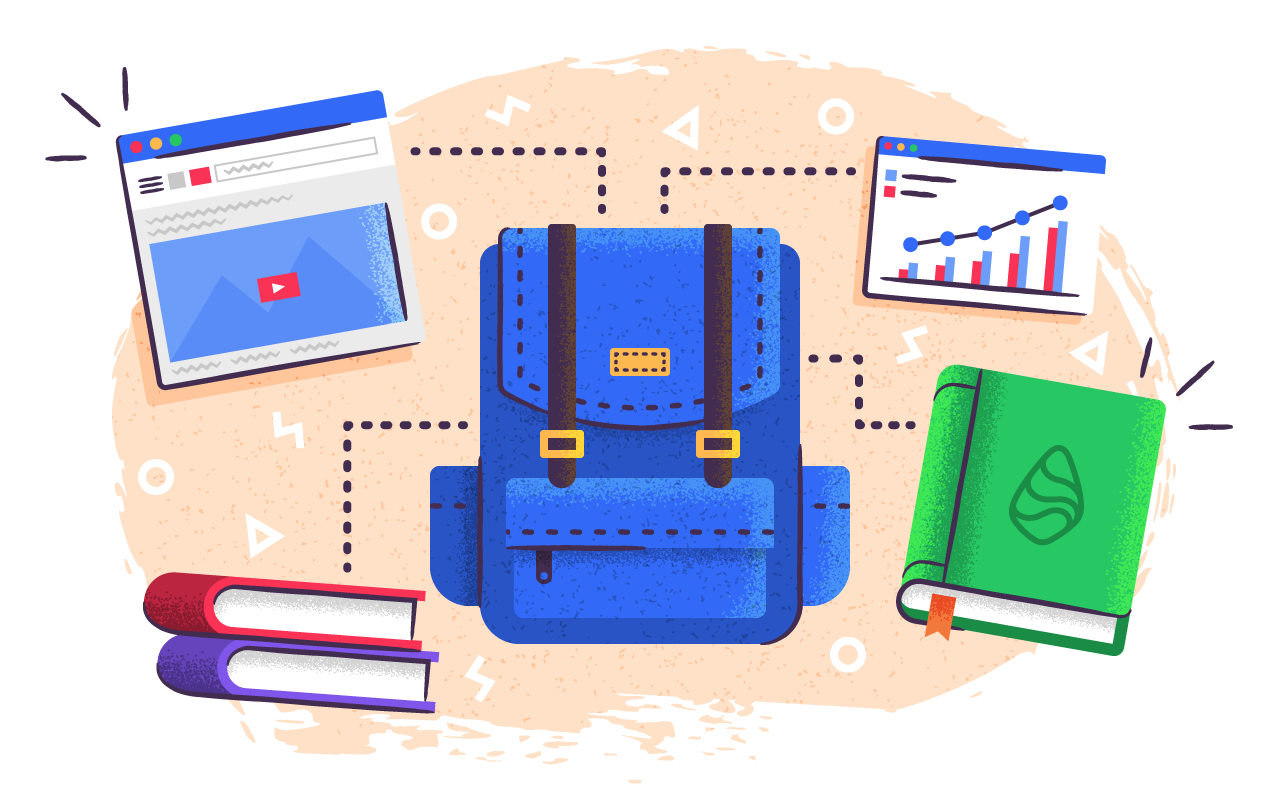Introduction
U.S. students are lagging in areas like math and science, and school systems are completely riddled with problems that need to be solved. In 2015, EdTech companies collectively raised over $1.85 billion in funding to solve the biggest problems in education today.
Table of Contents
The Challenge
For one, the education system is extremely fragmented. Teachers, the primary users of educational technology in school systems, aren’t typically the ones who make purchase decisions. School administrators are usually the ones making those decisions, yet they’re not the ones using the product. And because there are multiple stakeholders involved, marketing gets more complicated.
In this post, we’ll talk about how popular marketing tactics today can be applied to the education world, and how education companies today are applying them.
But first, I’ll tell you about different EdTech business models, so we can see how the marketing tactics fit into the big picture.
Business Models in EdTech
Before we can dig into the marketing tactics and how they can be applied to education, we first need to understand how those education marketing tactics fit into the bigger picture. And for that, we have to understand not just EdTech business models, but also how they relate to the marketing funnel.There are different business models in EdTech that can be pursued depending on who your target customer is. Here’s a quick summary of the major ones:
1) Freemium for Teachers
One option is to have a basic free version of your product for teachers, with the option to upgrade to a paid version for additional features and benefits. For example, MasteryConnect (a business that helps teachers track their students’ progress with data, develop targeted intervention programs, etc.) offers a free version of their product for verified teachers and administrators. And then for those who want additional analytics and reporting features, they have a Teacher Pro plan available.
Similarly, Evernote has a discounted premium plan specifically for teachers and schools, which many educators use.
2) Freemium for Students
Some companies target their services towards students and, as with the one for teachers, they offer a free plan with a pro version available for those who want more features.
For example, Quizlet has a free plan to help students study for quizzes and tests using a certain number of flashcards. For those who want more, they have a Quizlet Plus plan for $19.99 per year. The premium plan offers features like creating online groups for studying, adding images to flashcard sets, removal of ads, enhanced audio, and more.
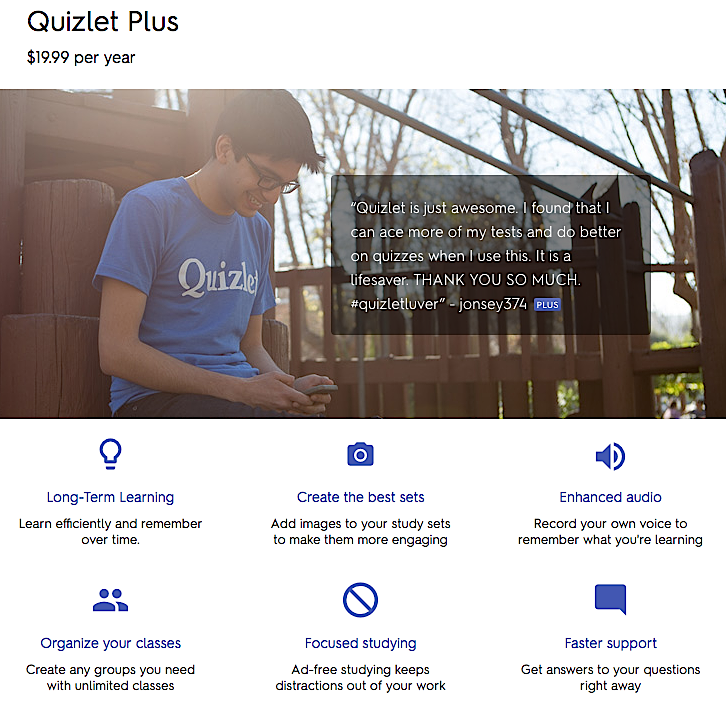
3) Freemium for Schools
Another option is to offer freemium for schools. This model is more difficult, as it assumes that teachers and students will influence decision makers to make a purchase decision.
However, TeachBoost (a company that helps educators streamline their processes), has had success using this approach. TeachBoost targets principals at schools first, who then act as advocates for the business and help get buy-in from the right people at the top to make a purchase decision.
4) Selling to Other EdTech Companies
Another business model that some companies use is selling your products to other EdTech companies. For example, you could offer your product for free to a targeted audience, and then charge other companies for access to distribution.
Clever grew its business based on this approach, which has worked extremely well for them: the company reached 70% of K-12 schools in the United States. In fact, according to their site, 89 out of the top 100 school districts use Clever.
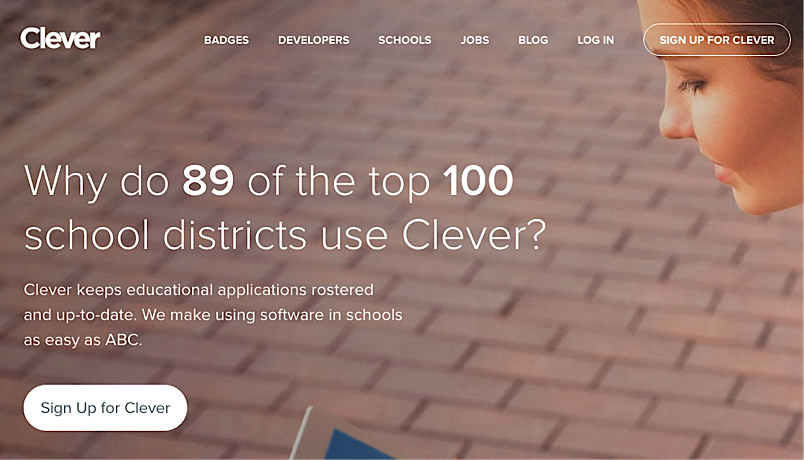
According to the EdTech handbook, Clever collects and interprets school data, gathers information, and sells that information to startups that want to connect with schools.
Coursera used to use a similar model before they began charging people who wanted to take some of their courses. They partnered with colleges and other major educational institutions to create courses and distribute them to a wide range of users.
5) Enterprise Sales
Some products are so comprehensive that they bypass consumers (i.e. students) as the first set of users and instead are directly targeted to school districts.
For example, Panorama Education (a data analytics company that helps schools analyze feedback) targets schools directly. They have products that help schools transform their paper-based student feedback process into a digital version.
Another example of a business that has succeeded using this approach is Dreambox Learning. Their “Intelligent Adaptive Learning” tool is a business sells directly to schools and districts.
6) Direct to consumer
Lastly, we’ve got direct-to-consumer businesses which directly target people like parents as the end customer. Having a product that starts off serving students and teachers can be a great “gateway” for getting parents as customers.
Educator, which helps “equalize education by assembling the best teachers in the country and making their lectures available to everyone,” is one example of this type of business model.
Next, let’s talk about the marketing funnel and how it applies to the EdTech space.
Marketing Funnels in EdTech
A marketing funnel is basically a sequence of steps that a prospect takes from the time they first hear about your business to the time they decide to become paying customers.Establishing a marketing funnel sequence is one of the most valuable things you can do to boost your conversion rates. At a basic level, marketing funnels consist of these stages: Awareness, interest, evaluation, and decision.
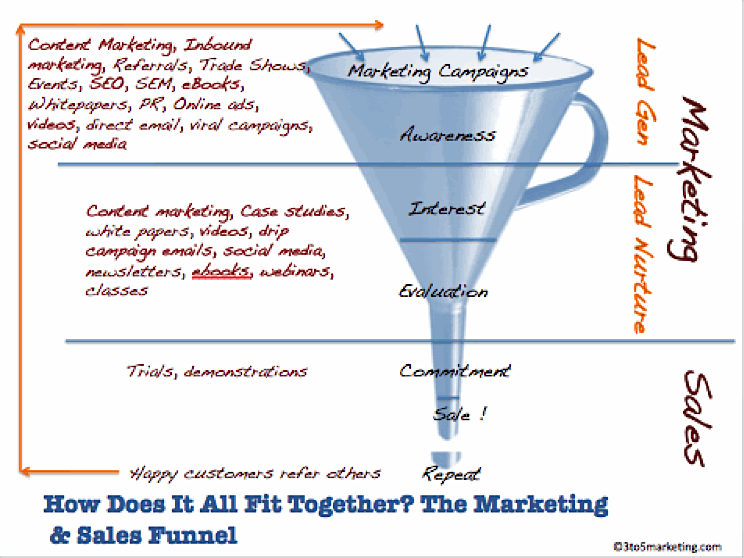
Source: KISSmetrics
Awareness
At the top of the funnel we have the awareness stage. This is the stage at which customers become aware of your product or business. Top of the funnel marketing materials could include content marketing, inbound marketing, referrals, events, SEO, SEM, paid advertising, and more. Marketing at this stage of the funnel is aimed at reaching the largest number of potential customers as possible.
Interest
Next, you have the interest stage, where you get customers who have moved on from the awareness phase and are now interested in your product. Marketing materials at this stage would be more educational — consisting of webinars, e-books, e-mail marketing campaigns, white papers, case studies, etc.
Evaluation
After customers have become aware of your product and are definitely interested, they start evaluating it against competitors. Marketing materials at this stage might be demo videos and samples.
Decision
Finally, it comes time to actually make the decision to buy. At this commitment stage, marketing materials can include product demos, free trials or sales calls.
With a funnel, you can see exactly how many people are dropping off at each step, and you’ll know where you need to increase your conversions so that it translates to the bottom line.
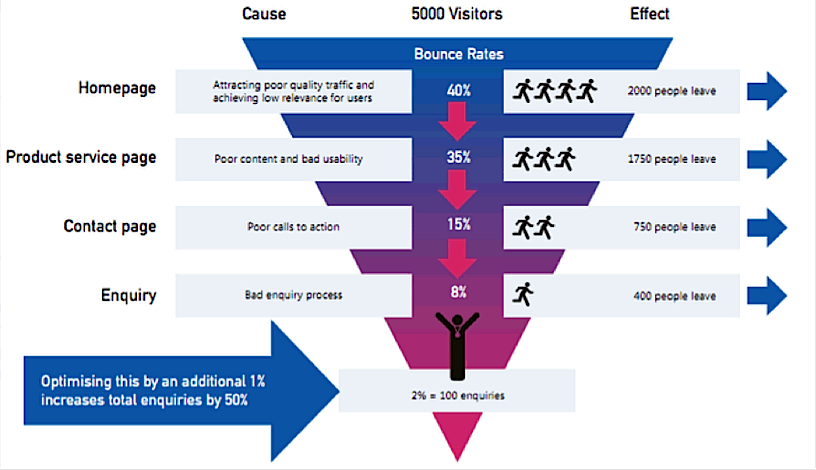
Source: Coast Digital
For example, if you find that a high percentage of customers are moving from the interest phase to the evaluation phase, then you know you just have to get more people into the top of the funnel.
If you’re getting lots of people into the top of your funnel, but only a small percentage are moving to the next step to express interest in your product, then you know that you need to adjust your top-of-the-funnel content.
Implementing marketing funnels on a regular business is relatively straightforward. For example, if you’re a SaaS business that sells a video marketing tool, you’ll have to do the following:
Create content about video marketing at the top of the funnel
Get readers to sign up for your e-mail list
Create an auto-responder sequence to get them on a sales call
Sell your product to the decision maker once you get their contact information in the sales process
But in EdTech, things aren’t so organized.
The education industry is notorious for being fragmented. These decision makers (the school board) are usually different from the people who will actually be using your product (teachers and students), so you have to appeal to multiple stakeholders through your marketing.
Even so, similar fundamentals still apply. According to bee-seen, there are three parts to converting a sale in the EdTech world: content, acquisition, and conversion.
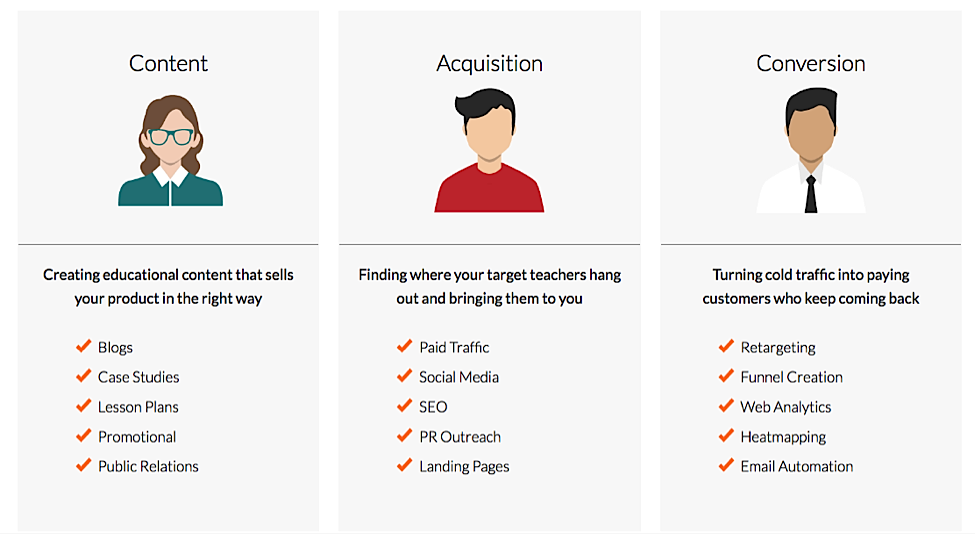
Source: bee-seen
We’ll get into examples of how to execute on a variety of these marketing tactics. But at the end of the day, all marketing hinges on one thing: understanding your target customer.
Understanding Your Audience in EdTech
If you’re running an education company, then chances are you have multiple stakeholders that you have to worry about. School district leaders, teachers, parents, and students all have different needs, but they all need to be satisfied for a sale to go through.How do you market to all of them?
According to the EdTech Handbook, the first thing to think about is who your initial customer is. For example, you might start off by targeting teachers, but your ultimate goal is to close a deal with a school district. You might begin by offering free plans to teachers and students, but your objective is to sell a paid version to parents. Or you might go directly to your target market, even if they’re a massive entity.
Whatever the case, first focus on making your initial target users happy. This way, you can ensure that they’ll turn into advocates for your business, and help you get more customers and users through referrals.
In addition to this, there are a few sector-specific things to consider when marketing your product in EdTech:
- There’s usually a difference between users and buyers, unless you’re going directly to your target market. If this is the case, you’ll need to produce content at each stage of the funnel that hits the pain points of each stakeholder.
- Sales cycles with larger entities like school districts can take up to 9-18 months.
- Schools and teachers are, generally speaking, averse to change.
- Teachers are largely skeptical of trying out new technology because of poor technology that has been forced on them in the past. Instead of telling them why your product is better than everything else’s out there, show them how your product will solve their problems in the classroom.
- Even free products aren’t easy to sell. When adopting a new product into the classroom workflow, there often needs to be some sort of training involved, and there’s usually a short period of lost productivity right after the tool is introduced.
Now, let’s dig into actual examples of marketing tactics that work for education companies.
Marketing Tactics for Education Companies
Video Marketing
Khan Academy is one of the most successful EdTech companies today: they’ve got over one million teachers registered on their platform, and about 4 million exercises completed each day.

They have tutorials on a variety of subjects that students learn in class, like physics, math (like this example of adding and subtracting fractions), economics, computer science, and more. Their goal is to help students learn at their own pace, and build a platform that adapts to the individual’s style of learning.
One thing that Khan Academy does exceptionally well to drive their growth is video marketing. They took advantage of the power of video for online learning to reach millions of people. While their main platform is on their website, they’ve also uploaded certain lessons to YouTube to reach a wider audience.
For example, their “Introduction to Algebra” video has over 2.5 million views!

The success that Khan Academy has with videos inspired Bank of America to create their own video marketing campaign called “Better Money Habits.” This is a series of videos to help Americans build financial literacy and at the same time build a more positive brand image for themselves.
According to Switch Video, part of the reason that Khan Academy has had such great success with video is that they make their content easily consumable. For example, they don’t just put their videos on their own site. They upload them to YouTube, they make them available on an iPad app, and more.
Part of the reason video marketing works so well is because people like to consume content as efficiently as possible. No one wants to read pages and pages of text that may or may not be useful to them. Khan Academy does a great job of making their videos easily digestible — most of their videos are within 5 to 10 minutes, not long, dry 30-minute lectures.
This is part of the reason why their content has a different “feel” compared to a regular classroom lecture that might last 30-45 minutes or beyond. And it’s free, which allows them to reach a wide range of students.
The benefits of video marketing are becoming more and more recognized. B2B companies especially are seeing a lot of value in video marketing — 73% of B2B companies that use video marketing see significant ROI from it.
Video can also help cement your company’s message in the minds of your target audience. According to Jeff Bullas, people remember just 10% of the information they hear within the next three days. However, if you add video, then people will retain 65% of the information.
Video marketing doesn’t just entail viral videos on YouTube or high-end, commercial-quality videos that brands produce. They can be used at all points throughout the buyer’s journey.
For example, you could use tutorial videos to serve teachers or students (i.e. your initial set of customers) who will become your advocates when it comes time to sell the decision makers a different solution.
Inbound Marketing
Although 60% of marketers have an inbound marketing strategy, most companies in the EdTech space are still somewhat slow to adopt this relatively new approach to getting customers.
Inbound marketing is different from older, more traditional forms of marketing in that it doesn’t focus on getting customers through cold calls or direct sales. Instead, it provides content for potential customers at every step of the buyer’s journey in order to move them down the funnel more effectively.
There are a variety of inbound marketing tactics that can help funnel more prospects down the funnel:
Produce Targeted Content
Education is a very fragmented industry, which means that it can be hard to reach the right person at the right time.
For example, if a teacher comes across one of your online videos, enjoys it, and enters her e-mail address, it may not do you much good to try to move her to the bottom of your funnel if you’re targeting school districts.
That’s why it’s important to produce content with your target buyer personas in mind.
You might have to get a buy-in from teachers and students before going after parents or school districts. Or if you’re selling a tool to parents, you might have to get buy-in from students first. Because you have so many different stakeholders involved, you’ll have to create the right type of content to guide each of them along their decision making process.
For instance, you could create blog posts, videos, and other top-of-the-funnel content to attract your initial customers. Then, as they begin to spread the word “up the ladder” to your final customers, you’ll want to make sure that they have different types of content to see, such as case studies, white papers, and proof that you can deliver on the metrics that they care about.
Paid Traffic
Paid traffic can work well for products that don’t require a huge financial commitment to purchase.
If your product is a low commitment tool for parents or students to use, then paid traffic could be a great channel to get their attention. For example, Chegg (a textbook rental company) used Facebook ads to promote their business to price sensitive students.

Even if you’re selling a high-ticket tool to school districts, paid traffic could still be a good option to target your initial set of customers (students or teachers) — 80% of K-12 teachers use social media personally and professionally.
Segmentation
Because education companies have so many different stakeholders involved, it’s important to segment your audience properly so that each group only sees content that’s relevant to them.
For example, a school administrator might not have much interest in an algebra tutorial video that’s aimed at delighting students, and students won’t care about the case studies and whitepapers that you have created to persuade administrators to buy.
Here’s a simple way that Khan Academy segments their content between teachers and parents:
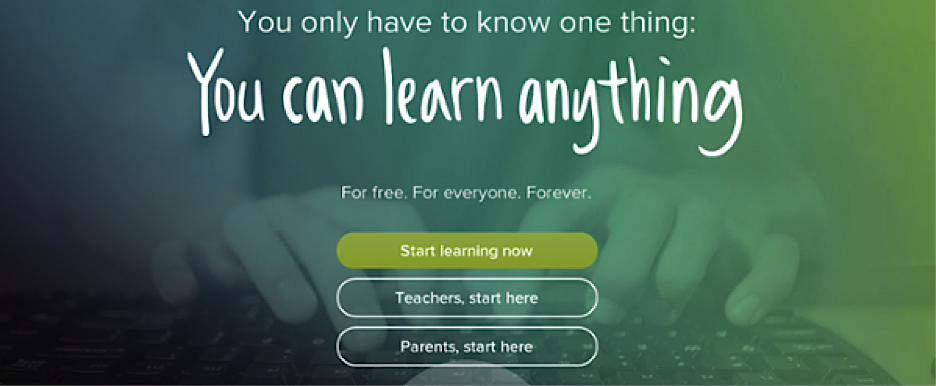
Source: Khan Academy
Depending on which option users click, they will be shown different types of content that fits their specific needs and situation.
Segmentation is a valuable tool for EdTech marketers who need to create content for different stakeholders to get buy-in from them.
Conclusion
There’s huge opportunity out there for businesses that want to get into the education space.But there are a ton of challenges that companies face along the way:
- There’s always resistance from teachers, since they’ve been bombarded with technology that interrupts their workflow and is more of a liability than a benefit.
- There’s the long sales cycle that lasts 9-18 months, which can be frustrating if your business model hinges on selling to school districts or other massive entities that take a long time to make a decision.
- There’s a difference between the people from whom you might need to get buy-in initially, and the people who are ultimately responsible for making the purchase decision. And they all have different needs.
- There’s the fact that new solutions take a lot of time in terms of training and getting school workers up to speed.
But even though there are plenty of problems to be solved, education is one of the few industries that has a direct, significant impact on the lives of everyone as they’re growing up. With the right approach, companies can get past the “fragmentation barrier” and get buy-in from the right people at the right time.
If you run an education company, which strategy will you use? Let me know in the comments below.


